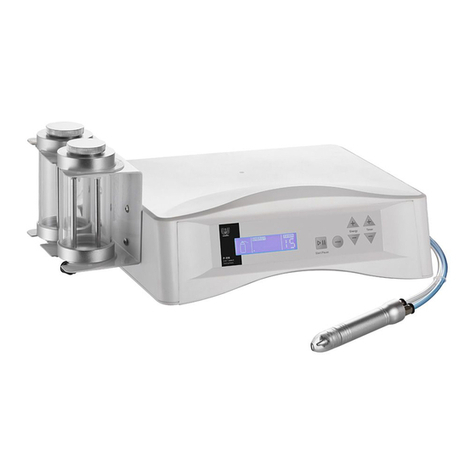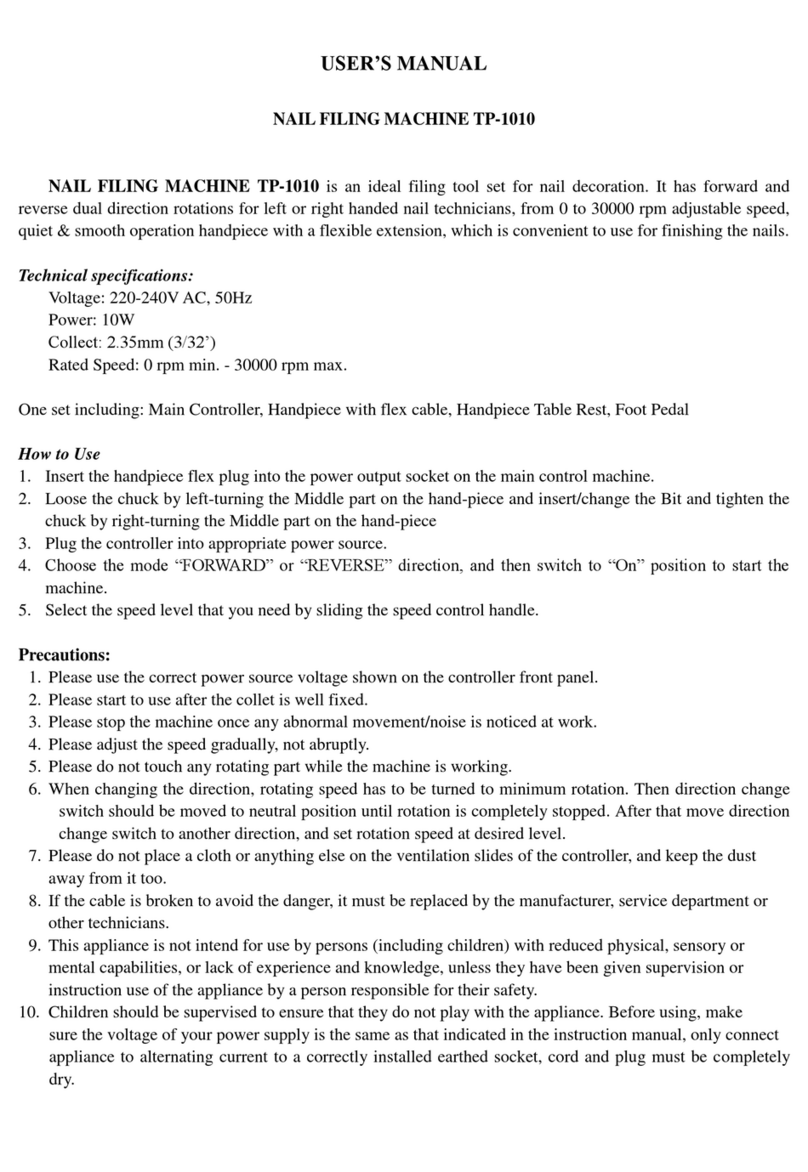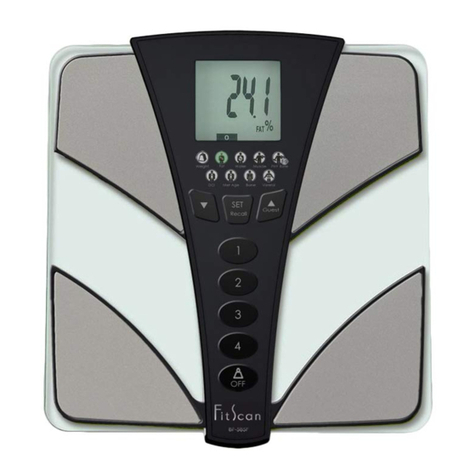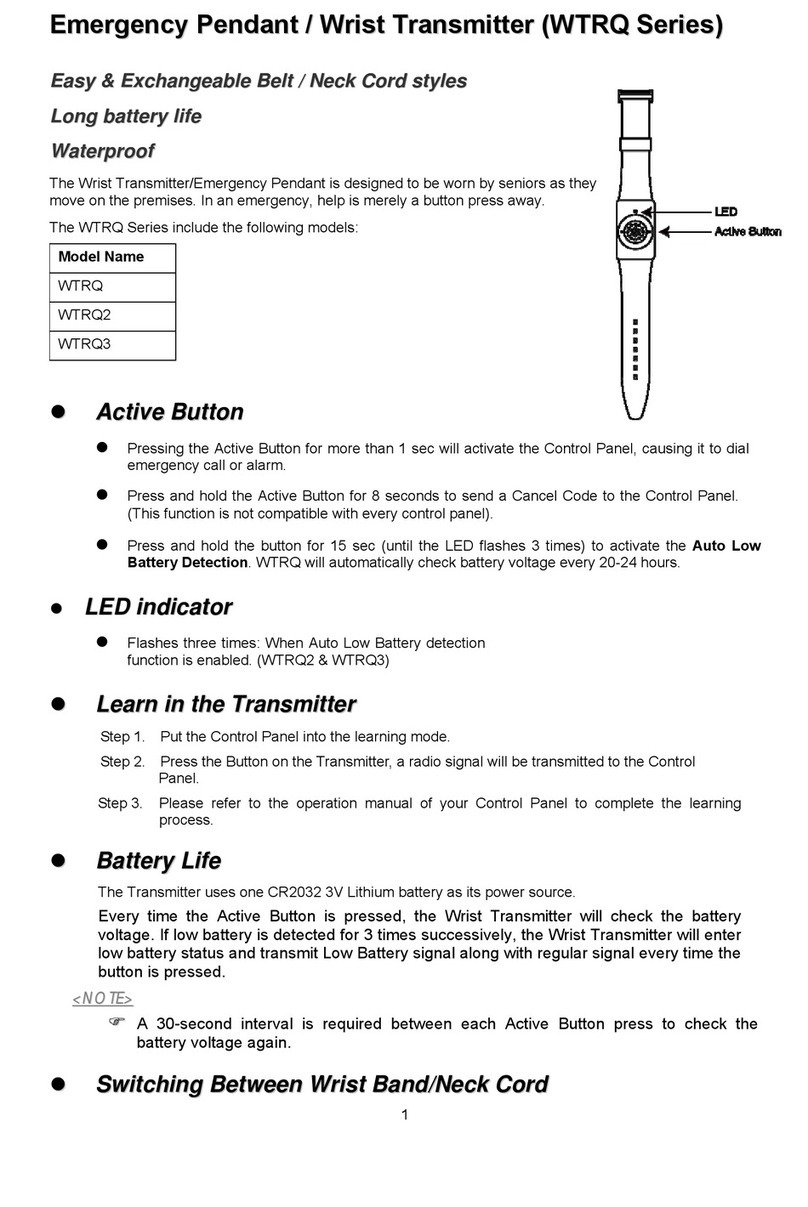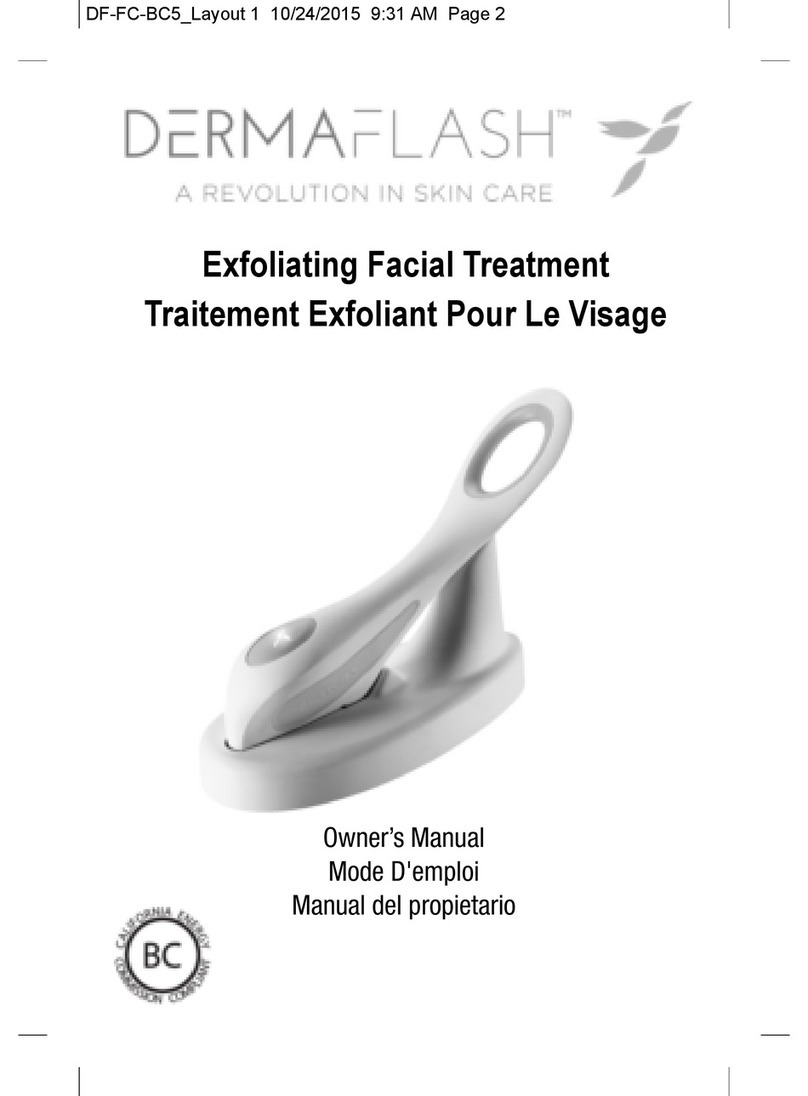GlucaGen HypoKit User manual

Indications and Usage
What is GlucaGen®(glucagon) for
injection 1mg/mL?
GlucaGen®is a prescription medicine
used to treat very low blood sugar (severe
hypoglycemia) in people with diabetes who
use insulin.
Important Safety Information
Who should not use GlucaGen®?
Do not use GlucaGen®if:
•you are allergic to glucagon or lactose or any
of the ingredients in GlucaGen®
•you have a tumor in the gland on top
of your kidneys (adrenal gland) called a
pheochromocytoma
•you have a tumor in your pancreas called an
insulinoma
What should I tell my doctor before using
GlucaGen®?
Before using GlucaGen®, tell your doctor
about all of your medical conditions,
including if you:
•have kidney problems
•have pancreas problems. Tumors in your
pancreas called glucagonomas
•have not had food or water for a long time
(prolonged fasting or starvation)
•have low blood sugar that does not go away
(chronic hypoglycemia)
•have heart problems
•are pregnant or plan to become pregnant
•are breastfeeding or plan to breastfeed. It
is not known if GlucaGen®passes into your
breast milk
Tell your doctor about all the medicines
you take, including prescription and over
the counter medicines, vitamins and herbal
supplements. GlucaGen®may affect the way
other medicines work, and other medicines
may affect how GlucaGen®works.
Please see additional Important
Safety Information on next page, and
Prescribing Information on following
pages.
Summary of
Instructions for Use
This is only a summary of the Instructions for Use. Please see the full Instructions for Use on the following pages.
–––––––––––––––
Preparing the GlucaGen®dose
––––––––––––––––
See instructions for giving the injection on the next page u
Step 1. Check that the orange plastic cap
on your vial of GlucaGen®is firmly attached.
Do not use if the cap is loose or missing.
With your thumb, flip the cap off the
GlucaGen®vial.
Pull Straight Off
Step 2. Pick up the prefilled syringe
containing sterile water. Do not use any
other liquid to mix the medicine. Hold the
syringe with 1 hand. With your other hand,
pull the needle cover off the syringe. Do not
remove the plastic backstop from the syringe.
Step 3. Pick up the GlucaGen®vial of dry
powder. Hold the vial with 1 hand. With your
other hand, push the needle of the prefilled
syringe through the center of the rubber
stopper.
Step 4. Hold the vial and syringe together,
with the needle still inserted into the vial.
Carefully turn the vial and syringe together
right side up. Slowly push the plunger down
until the syringe is empty. Do not take the
syringe out of the vial.
Step 5. Firmly hold both the vial and syringe
together in one hand, and gently shake until
the powder is completely dissolved. Do not
use if a gel has formed, or if you see particles
in the solution. Do not take the syringe out
of the vial.
Step 6. With the needle still inserted into
the vial, carefully turn the vial and syringe
together upside down. Gently pull down on
the plunger and slowly withdraw all of the
liquid into the syringe. Do not pull the plunger
out of the syringe.
Step 7. Keep the needle inside the vial.
Check the syringe for air bubbles. If you see
bubbles, tap the syringe until the bubbles rise
to the top of the syringe. Gently push on the
plunger to move only the air bubbles back
into the vial.
1 mL
0.5 mL
Step 8. Hold the vial and syringe as shown.
•The usual dose for adults and children who
weigh more than 55 pounds (25 kg) is 1 mg
(1 mL). Use the content of the full syringe
(1 mL).
•The usual dose for children who weigh less
than 55 pounds (25 kg) is 0.5 mg (0.5 mL).
Gently push the plunger until it is at the
0.5 mL mark on the syringe to ensure there
is 0.5 mL liquid left in the syringe.
Take the syringe and needle out of the vial
when the correct dose of GlucaGen®is in the
syringe.
If you do not know how much the child
weighs:
•Give a child under 6 years of age 0.5 mg
(0.5 mL).
•Give a child 6 years of age and older 1 mg
(1 mL).

GlucaGen®and HypoKit®are registered trademarks of Novo Nordisk A/S.
Novo Nordisk is a registered trademark of Novo Nordisk A/S.
© 2018 Novo Nordisk All rights reserved. US18GLGN00007 August 2018
Important Safety Information
(cont’d)
How should I use GlucaGen®?
•Use GlucaGen®exactly as your doctor tells
you to
•Make sure that you and your family know
how to use GlucaGen®the right way before
you need it
•Act quickly. Having very low blood sugar for
a period of time may be harmful
•Call for emergency medical help right
after you use GlucaGen®
•Eat sugar or a sugar-sweetened product such
as a regular soft drink or fruit juice as soon
as you are able to swallow
•Tell your doctor each time you use
GlucaGen®. Your doctor may need to change
the dose of your diabetes medicines
What should I avoid while using
GlucaGen®?
While using GlucaGen®do not:
•drive or operate machinery until you have
eaten sugar or a sugar-sweetened product
such as a regular soft drink or fruit juice
What are the possible side effects of
GlucaGen®?
GlucaGen®may cause serious side effects,
including:
•High blood pressure. High blood pressure
is common after taking GlucaGen®and can
be severe
•Low blood sugar. GlucaGen®can cause
low blood sugar in patients with tumors
in their pancreas called insulinomas and
glucagonomas by making too much insulin in
their bodies
•Allergic reactions. Symptoms of a serious
allergic reaction to GlucaGen®may include
rash, difficulty breathing, or low blood
pressure (hypotension)
The most common side effects of GlucaGen®
include:
•nausea
•vomiting
•temporary fast heartbeat or pounding in
your chest (tachycardia)
Please see additional Important Safety
Information on previous page, and
Prescribing Information on following
pages.
GlucaGen®HypoKit®is available by prescription
only.
You are encouraged to report negative side effects
of prescription drugs to the FDA.
Visit www.fda.gov/medwatch, or call
1-800-FDA-1088.
If you need assistance with prescription costs,
help may be available. Visit pparx.org or call
1-888-4PPA-NOW.
Back
Front
Step 9. Choose the injection site. Common
injection sites for GlucaGen®are upper arms,
thighs, or buttocks.
Step 10. With one hand gently pinch the skin
at the injection site. With your other hand
insert the needle into the skin and push the
plunger down until the syringe is empty.
––––––––––––––––
Giving the GlucaGen®injection
––––––––––––––––
––––––––––––––
After Giving the GlucaGen®injection
–––––––––––––––
Step 11. Pull the needle out of the skin
and press on the injection site. Throw away
your used syringe with the needle attached
and any GlucaGen®you did not use.
See “How should I dispose of (throw
away) used GlucaGen®prefilled syringes”
in the full Instructions for Use on the
following pages.
Step 12. Turn the person on their side. When an
unconscious person awakens, they may vomit. Turning the
person on their side will lessen the chance of choking.
Step 13. Call for emergency medical help right away.
Step 14. Feed the person as soon as they are awake
and able to swallow.
Give the person a fast-acting source of sugar (such as a
regular soft drink or fruit juice) and a long-acting source of
sugar (such as crackers and cheese or a meat sandwich).
Step 15. Even if the GlucaGen®treatment wakes
the person, tell their doctor right away. The doctor
should be told whenever a severe drop in blood sugar
(hypoglycemia reaction) happens. The person’s dose of
diabetes medicine may need to be changed.
Hypoglycemia may happen again after receiving GlucaGen®treatment.
Early symptoms of hypoglycemia may include: sweating, drowsiness, dizziness, sleep disturbances, irregular heartbeat (palpitation), anxiety,
tremor, blurred vision, hunger, slurred speech, depressed mood, tingling in the hands, feet, lips, or tongue, irritability, abnormal behavior,
lightheadedness, unsteady movement, inability to concentrate, personality changes, headache, and restlessness.
If not treated early, hypoglycemia may worsen and the person may have severe hypoglycemia.
Signs of severe hypoglycemia include: confusion, unconsciousness, seizures, and death.

(glucagon) for injection 1 mg/mL
1
——— WARNINGS AND PRECAUTIONS ———
• Administer cautiously to patients suspected of having glucagonoma due to risk of secondary
hypoglycemia. Glucagon may release catecholamines from pheochromocytomas and is
contraindicated in patients with this condition. (5.1, 5.2)
• Allergic reactions may occur and include generalized rash, anaphylactic shock with breathing
difficulties, and hypotension. (5.3)
• In order for GlucaGen®treatment to reverse hypoglycemia, there must be adequate amounts of
glycogen stored in the liver. GlucaGen®should be used with caution in patients with conditions
resulting in low levels of releasable glucose in the liver. (5.4)
• Use caution when GlucaGen®is used as a diagnostic aid in diabetic patients because it may cause
hyperglycemia. (5.4)
• Necrolytic Migratory Erythema (NME), a skin rash, has been reported postmarketing following
continuous glucagon infusion and resolved with discontinuation of the glucagon. Should NME
occur, consider whether the benefits of continuous glucagon infusion outweigh the risks. (5.5)
• Use with caution in patients with known cardiac disease, as glucagon increases myocardial oxygen
demand. (5.6)
——— ADVERSE REACTIONS ———
Adverse reactions seen with GlucaGen®are:
• Nausea and vomiting (6)
• Temporary increase in blood pressure and pulse may occur after administration. (6)
To report SUSPECTED ADVERSE REACTIONS, contact Novo Nordisk Inc. at
1-800-727-6500 or FDA at 1-800-FDA-1088 or www.fda.gov/medwatch.
——— DRUG INTERACTIONS ———
• Beta-blockers may cause a greater increase in both pulse and blood pressure after administration.
(7.1)
• Glucagon may lose its ability to raise blood glucose or may produce hypoglycemia when given with
indomethacin. (7.2)
• Coadministration with an anticholinergic drug is not recommended due to increased
gastrointestinal side effects. (7.3)
• Glucagon may increase the anticoagulant effect of warfarin. (7.4)
• Insulin reacts antagonistically towards glucagon. (7.5)
——— USE IN SPECIFIC POPULATIONS ———
• Nursing mothers: unknown whether drug is excreted in human milk, therefore caution should be
exercised. (8.3)
• Pediatrics: reported safe and effective for treatment of severe hypoglycemia. Safety and effectiveness
for use as a diagnostic aid have not been established. (8.4)
See 17 for PATIENT COUNSELING INFORMATION and FDA-approved patient labeling.
Revised: 07/2018
13 NONCLINICAL TOXICOLOGY
13.1 Carcinogenesis, Mutagenesis, Impairment of Fertility
16 HOW SUPPLIED/STORAGE AND HANDLING
16.1 How Supplied
16.2 Recommended Storage
17 PATIENT COUNSELING INFORMATION
17.1 Physician Instructions
*Sections or subsections omitted from the full prescribing
information are not listed.
FULL PRESCRIBING INFORMATION: CONTENTS*
1 INDICATIONS AND USAGE
1.1 Treatment of severe hypoglycemia
1.2 Use as a diagnostic aid
2 DOSAGE AND ADMINISTRATION
2.1 Treatment of severe hypoglycemia
2.2 Use as a diagnostic aid
3 DOSAGE FORMS AND STRENGTHS
4 CONTRAINDICATIONS
5 WARNINGS AND PRECAUTIONS
5.1 Pheochromocytoma
5.2 Insulinoma and Glucagonoma
5.3 Hypersensitivity and Allergic Reactions
5.4 Glycogen Stores and Hypoglycemia
5.5 Necrolytic Migratory Erythema
5.6 Cardiac Disease
5.7 Laboratory Tests
6 ADVERSE REACTIONS
7 DRUG INTERACTIONS
7.1 Beta-blockers
7.2 Indomethacin
7.3 Anticholinergic Drugs
7.4 Warfarin
7.5 Insulin
8 USE IN SPECIFIC POPULATIONS
8.1 Pregnancy
8.3 Nursing Mothers
8.4 Pediatric Use
10 OVERDOSAGE
11 DESCRIPTION
12 CLINICAL PHARMACOLOGY
12.1 Mechanism of Action
12.2 Pharmacodynamics
12.3 Pharmacokinetics
HIGHLIGHTS OF PRESCRIBING INFORMATION
These highlights do not include all the information needed to use GlucaGen®safely
and effectively. See full prescribing information for GlucaGen®.
GlucaGen®(glucagon) for injection, for subcutaneous, intramuscular or intravenous use
Initial U.S. Approval: 1998
——— RECENT MAJOR CHANGES ———
• Warnings and Precautions (5.5).......................................................................................... 7/2018
——— INDICATIONS AND USAGE ———
GlucaGen®is an antihypoglycemic agent and a gastrointestinal motility inhibitor indicated for:
• Treatment of severe hypoglycemia (1.1)
• Use as a diagnostic aid (1.2)
——— DOSAGE AND ADMINISTRATION ———
Treatment of severe hypoglycemia (GlucaGen®HypoKit®)
• Reconstitute before administration. (2.1)
• Inject 1 mL (adults and children, weighing more than 55 lbs (25 kg)) or 0.5 mL (children weighing
less than 55 lbs (25 kg)) subcutaneously, intramuscularly, or intravenously. (2.1)
• If the weight is not known: Children younger than 6 years should be given 0.5 mL and children
6 years and older should be given 1 mL. (2.1)
• Seek emergency assistance immediately after subcutaneous or intramuscular injection of glucagon.
Glucagon injection may be repeated while waiting for emergency assistance. (2.1)
• Intravenous glucose MUST be administered if the patient fails to respond to glucagon. (2.1)
• When the patient responds to treatment, give oral carbohydrates to restore the liver glycogen and
prevent recurrence of hypoglycemia. (2.1)
Use as a diagnostic aid (GlucaGen®Diagnostic Kit and GlucaGen®10-Pack)
• Reconstitute before administration. (2.2)
• The dose ranges from 0.2 mg to 2 mg depending on the diagnostic technique and the route of
administration. (2.2)
• After the end of the diagnostic procedure, give oral carbohydrates to patients who have been fasting,
if this is compatible with the diagnostic procedure applied. (2.2)
——— DOSAGE FORMS AND STRENGTHS ———
• For injection: 1 mg of glucagon as powder for reconstitution in a single dose vial, alone or
co-packaged with Sterile Water for Reconstitution. (3)
——— CONTRAINDICATIONS ———
• Do not use in patients with known hypersensitivity to glucagon or lactose (4)
• Do not use in patients with pheochromocytoma (4)
• Do not use in patients with insulinoma (4)

GlucaGen®(glucagon) for injection 2
FULL PRESCRIBING INFORMATION
1 INDICATIONS AND USAGE
1.1 Treatment of severe hypoglycemia
GlucaGen®is used to treat severe hypoglycemic (low blood sugar) reactions which may occur in
patients with diabetes mellitus treated with insulin. Because GlucaGen®depletes glycogen stores, the
patient should be given supplemental carbohydrates as soon as he/she awakens and is able to swallow,
especially children or adolescents. Medical evaluation is recommended for all patients who experience
severe hypoglycemia.
1.2 Use as a diagnostic aid
GlucaGen®is indicated for use during radiologic examinations to temporarily inhibit movement of
the gastrointestinal tract. GlucaGen®is not recommended in combination with anticholinergic agents
due to the possibility of increased side effects. After the end of the diagnostic procedure, give oral
carbohydrates to patients who have been fasting, if this is compatible with the diagnostic procedure
applied.
2 DOSAGE AND ADMINISTRATION
For GlucaGen®HypoKit®:
2.1 Treatment of severe hypoglycemia
1. Using the supplied prefilled syringe, carefully insert the needle through the rubber stopper of the
vial containing GlucaGen®powder and inject all the liquid from the syringe into the vial.
2. Shake the vial gently until the powder is completely dissolved and no particles remain in the
fluid. The reconstituted fluid should be clear and of water-like consistency.
3. The reconstituted GlucaGen®gives a concentration of approximately 1 mg/mL glucagon.
4. The reconstituted GlucaGen®should be used immediately after reconstitution.
5. Inject 1 mL (adults and children, weighing more than 55 lbs (25 kg)) or 0.5 mL (children
weighing less than 55 lbs (25 kg)) subcutaneously, intramuscularly, or intravenously. Common
injection sites for GlucaGen®are upper arms, thighs, or buttocks. If the weight is not known:
children younger than 6 years should be given a 0.5 mL and children 6 years and older should
be given 1 mL.
6. Discard any unused portion.
7. Emergency assistance should be sought immediately after subcutaneous or intramuscular
injection of glucagon.
8. The glucagon injection may be repeated using a new kit while waiting for emergency assistance.
9. Intravenous glucose MUST be administered if the patient fails to respond to glucagon.
10. When the patient has responded to the treatment, give fast-acting and long-acting oral
carbohydrates to restore the liver glycogen and prevent recurrence of hypoglycemia.
For GlucaGen®Diagnostic Kit and the GlucaGen®10-pack:
2.2 Use as a diagnostic aid
1. GlucaGen®should be reconstituted with 1 mL of Sterile Water for Reconstitution (if supplied)
or 1 mL of Sterile Water for Injection, USP. Using a syringe, withdraw all of the Sterile Water
for Reconstitution (if supplied) or 1 mL Sterile Water for Injection, USP and inject into the
GlucaGen®vial.
2. Shake the vial gently until the powder is completely dissolved and no particles remain in the
fluid. The reconstituted fluid should be clear and of water-like consistency.
3. The reconstituted GlucaGen®gives a concentration of approximately 1 mg/mL glucagon.
4. The reconstituted GlucaGen®should be used immediately after reconstitution.
5. GlucaGen®must be administered by medical personnel.
6. Discard any unused portion.
7. Onset of action after an injection will depend on the organ under examination and route of
administration
[see Pharmacodynamics (12.2)]
.
8. The usual diagnostic dose for relaxation of the stomach, duodenal bulb, duodenum, and small
bowel is 0.2 mg to 0.5 mg given intravenously or 1 mg given intramuscularly; the usual dose
to relax the colon is 0.5 mg to 0.75 mg intravenously and 1 mg to 2 mg intramuscularly
[see
Pharmacodynamics (12.2)]
.
9. After the end of the diagnostic procedure, give oral carbohydrates to patients who have been
fasting, if this is compatible with the diagnostic procedure applied.
The GlucaGen®Diagnostic Kit and the GlucaGen®10-pack presentations are
intended only for use by healthcare providers as a diagnostic aid. The GlucaGen®
Diagnostic Kit and the GlucaGen®10-pack presentations are not intended for use
by patients to treat severe hypoglycemia because they are not packaged with a
syringe and diluent necessary for rapid preparation and administration during an
emergency outside of a healthcare facility.
3 DOSAGE FORMS AND STRENGTHS
GlucaGen®is supplied in a vial, alone, or accompanied by Sterile Water for Reconstitution (1 mL) also
in a vial (10 pack or diagnostic kit). It is also supplied as GlucaGen®HypoKit®, a presentation with
a disposable prefilled syringe containing 1 mL Sterile Water for Reconstitution. When the glucagon
powder is reconstituted with Sterile Water for Reconstitution (if supplied) or with Sterile Water for
Injection, USP, it forms a solution of 1 mg/mL glucagon for subcutaneous, intramuscular, or intravenous
injection (appearance of the powder may vary, and occasionally the powder may appear compacted).
4 CONTRAINDICATIONS
GlucaGen®is contraindicated in patients with:
• Known hypersensitivity to glucagon, lactose or any other constituent in GlucaGen®
• Pheochromocytoma
[see Warnings and Precautions (5.1)]
• Insulinoma
[see Warnings and Precautions (5.2)]
5 WARNINGS AND PRECAUTIONS
5.1 Pheochromocytoma
GlucaGen®is contraindicated in patients with pheochromocytoma because GlucaGen®may stimulate
the release of catecholamines from the tumor. If the patient develops a dramatic increase in blood
pressure, 5 to 10 mg of phentolamine mesylate has been shown to be effective in lowering blood
pressure for the short time that control would be needed.
5.2 Insulinoma and Glucagonoma
GlucaGen®should not be administered to patients suspected of having insulinoma. In patients
with insulinoma, intravenous administration of glucagon may produce an initial increase in blood
glucose; however, GlucaGen®administration may directly or indirectly (through an initial rise in blood
glucose) stimulate exaggerated insulin release from an insulinoma. A patient developing symptoms of
hypoglycemia after a dose of GlucaGen®should be given glucose orally or intravenously, whichever
is most appropriate. Caution should be observed in administering GlucaGen®to patients with
glucagonoma.
5.3 Hypersensitivity and Allergic Reactions
Allergic reactions may occur and include generalized rash, and in some cases anaphylactic shock
with breathing difficulties, and hypotension. The anaphylactic reactions have generally occurred in
association with endoscopic examination during which patients often received other agents including
contrast media and local anesthetics. The patients should be given standard treatment for anaphylaxis
including an injection of epinephrine if they encounter respiratory difficulties after GlucaGen®injection.
5.4 Glycogen Stores and Hypoglycemia
In order for GlucaGen®treatment to reverse hypoglycemia, adequate amounts of glucose must be
stored in the liver (as glycogen). Therefore, GlucaGen®should be used with caution in patients with
conditions such as prolonged fasting, starvation, adrenal insufficiency, or chronic hypoglycemia
because these conditions result in low levels of releasable glucose in the liver and an inadequate
reversal of hypoglycemia by GlucaGen®treatment.
5.5 Necrolytic Migratory Erythema
Necrolytic migratory erythema (NME), a skin rash commonly associated with glucagonomas
(glucagon-producing tumors) and characterized by scaly, pruritic erythematous plaques, bullae, and
erosions, has been reported postmarketing following continuous glucagon infusion. NME lesions may
affect the face, groin, perineum and legs or be more widespread. In the reported cases NME resolved
with discontinuation of the glucagon, and treatment with corticosteroids was not effective. Should
NME occur, consider whether the benefits of continuous glucagon infusion outweigh the risks.
5.6 Cardiac Disease
Caution should be observed when GlucaGen®is used as an adjunct in endoscopic or radiographic
procedures to inhibit gastrointestinal motility in patients with known cardiac disease.
5.7 Laboratory Tests
Blood glucose measurements may be considered to monitor the patient’s response.
6 ADVERSE REACTIONS
The following important adverse reactions are described below and elsewhere in the labeling:
• Hypersensitivity and Allergic Reactions
[see Warnings and Precautions (5.3)]
• Necrolytic Migratory Erythema
[see Warnings and Precautions (5.5)]
Side effects may include nausea and vomiting at doses above 1 mg or with rapid injection. Hypotension
has been reported up to 2 hours after administration in patients receiving GlucaGen®as premedication
for upper GI endoscopy procedures. GlucaGen®exerts positive inotropic and chronotropic effects and
may, therefore, cause tachycardia and hypertension. Adverse reactions indicating toxicity of GlucaGen®
have not been reported. A temporary increase in both blood pressure and pulse rate may occur
following the administration of GlucaGen®. Patients taking beta-blockers might be expected to have a
greater increase in both pulse and blood pressure, an increase of which will be temporary because of
GlucaGen®’s short half-life
[see Drug Interactions (7.1)]
. The increase in blood pressure and pulse rate
may require therapy in patients with pheochromocytoma or coronary artery disease
[see Warnings and
Precautions (5.1)]
. Anaphylactic reactions may occur in some cases.
Table 1 Frequency of Adverse Reactions
Treatment of severe hypoglycemia
Frequency (%) Adverse Reaction
< 10 Nausea
< 1 Vomiting
Use as a diagnostic aid
< 10 Nausea
< 1 Vomiting
< 1 Hypoglycemia
< 1 Hypoglycemic coma
The following adverse reactions have been identified during postapproval use of GlucaGen®. Because
these reactions are reported voluntarily from a population of uncertain size, it is generally not possible
to reliably estimate their frequency or establish a causal relationship to drug exposure.
Necrolytic migratory erythema (NME) cases have been reported postmarketing in patients receiving
continuous infusion of glucagon.
7 DRUG INTERACTIONS
7.1 Beta-blockers
Patients taking beta-blockers might be expected to have a greater increase in both pulse and blood
pressure, an increase of which will be temporary because of glucagon’s short half-life. The increase
in blood pressure and pulse rate may require therapy in patients with pheochromocytoma or coronary
artery disease.
7.2 Indomethacin
When used with indomethacin, glucagon may lose its ability to raise blood glucose or may even
produce hypoglycemia. Therefore, caution should be exercised for patients taking indomethacin when
glucagon will be administered.
7.3 Anticholinergic Drugs
Coadministration with an anticholinergic drug is not recommended due to increased gastrointestinal
side effects.
7.4 Warfarin
Glucagon may increase the anticoagulant effect of warfarin. Therefore, caution should be exercised for
patients taking warfarin when glucagon will be administered.

GlucaGen®(glucagon) for injection 3
7.5 Insulin
Insulin reacts antagonistically towards glucagon. Therefore, caution should be exercised when
glucagon is used as a diagnostic aid in diabetes patients.
8 USE IN SPECIFIC POPULATIONS
8.1 Pregnancy
Reproduction studies were performed in rats and rabbits at GlucaGen®doses of 0.4, 2.0, and 10 mg/kg.
These doses represent exposures of up to 100 and 200 times the human dose based on mg/m2for rats
and rabbits, respectively, and revealed no evidence of harm to the fetus. There are, however, no adequate
and well-controlled studies in pregnant women. Glucagon does not cross the human placenta barrier.
8.3 Nursing Mothers
It is not known whether this drug is excreted in human milk. Because many drugs are excreted in human
milk, caution should be exercised when GlucaGen®is administered to a nursing woman. No clinical
studies have been performed in nursing mothers, however, GlucaGen®is a peptide and intact glucagon
is not absorbed from the GI tract. Therefore, even if the infant ingested glucagon it would be unlikely to
have any effect on the infant. Additionally, GlucaGen®has a short plasma half-life thus limiting amounts
available to the child.
8.4 Pediatric Use
For the treatment of severe hypoglycemia: The use of glucagon in pediatric patients has been reported
to be safe and effective.
For use as a diagnostic aid: Safety and effectiveness in pediatric patients have not been established.
10 OVERDOSAGE
No reports of overdosage with GlucaGen®have been reported. If overdosage occurs, the patient may
experience nausea, vomiting, inhibition of GI tract motility, increase in blood pressure and pulse
rate. In case of suspected overdosing, the serum potassium may decrease and should be monitored
and corrected if needed. If the patient develops a dramatic increase in blood pressure, phentolamine
mesylate has been shown to be effective in lowering blood pressure for the short time that control
would be needed.
11 DESCRIPTION
GlucaGen®(glucagon) for injection is an antihypoglycemic agent and a gastrointestinal motility inhibitor
for subcutaneous, intramuscular or intravenous use. It is produced by expression of recombinant DNA
in a
Saccharomyces cerevisiae
vector with subsequent purification. The chemical structure of the
glucagon in GlucaGen®is identical to human glucagon and to glucagon extracted from beef and pork
pancreas. Glucagon with the empirical formula of C153H225N43O49S, and a molecular weight of 3483, is
a single-chain polypeptide containing 29 amino acid residues. The structure of glucagon is:
His- Ser- Gln-Gly- Thr- Phe- Thr- Ser-Asp- Tyr- Ser-
1 2 3 4 5 6 7 8 9 10 11
Lys-Tyr- Leu-Asp-Ser- Arg- Arg-Ala-Gln- Asp-Phe-
12 13 14 15 16 17 18 19 20 21 22
Val- Gln-Trp- Leu- Met-Asn-Thr
23 24 25 26 27 28 29
GlucaGen®is a sterile, lyophilized white powder in a 2 mL vial (appearance of the powder may vary,
and occasionally the powder may appear compacted). The reconstituted solution contains glucagon as
hydrochloride 1 mg/mL and lactose monohydrate (107 mg). GlucaGen®is supplied at pH 2.5-3.5 and
is soluble in water.
12 CLINICAL PHARMACOLOGY
12.1 Mechanism of Action
Antihypoglycemic Action: Glucagon induces liver glycogen breakdown, releasing glucose from
the liver. Hepatic stores of glycogen are necessary for glucagon to produce an antihypoglycemic effect.
Gastrointestinal Motility Inhibition: Extra hepatic effects of glucagon include relaxation of the
smooth muscle of the stomach, duodenum, small bowel, and colon.
12.2 Pharmacodynamics
For the treatment of severe hypoglycemia:
Blood glucose concentration rises within 10 minutes of injection and maximal concentrations are
attained at approximately 30 minutes after injection (see Figure 1). The duration of hyperglycemic
action after intravenous or intramuscular injection is 60–90 minutes.
Figure 1. Recovery from Insulin Induced
Hypoglycemia (mean blood glucose)
After Intramuscular Injection of 1 mg
GlucaGen®in Type I Diabetic Men
For use as a diagnostic aid:
Table 2 Pharmacodynamic Properties of Glucagon
Route of
Administration Dose*
Time of
Maximal
Glucose
Concentration
Time of Onset
of Action for
GI Smooth Muscle
Relaxation
Duration of
Smooth Muscle
Relaxation1
IV 0.25-0.5 mg 5-20 minutes 45 seconds 9-17 minutes
2 mg 5-20 minutes 45 seconds 22-25 minutes
IM 1 mg 30 minutes 8-10 minutes 12-27 minutes
2 mg 30 minutes 4-7 minutes 21-32 minutes
*The usual diagnostic dose for relaxation of the stomach, duodenal bulb, duodenum, and small bowel
is 0.2–0.5 mg given intravenously or 1 mg given intramuscularly; the usual dose to relax the colon is
0.5–0.75 mg intravenously and 1–2 mg intramuscularly.
1Note: The time of maximal glucose concentration for GlucaGen®administered subcutaneously is
30-45 minutes.
12.3 Pharmacokinetics
Intramuscular injection of 1 mg GlucaGen®resulted in a mean Cmax (CV%) of 1686 pg/mL (43%) and
median Tmax of 12.5 minutes. The mean apparent half-life of 45 minutes after intramuscular injection
probably reflects prolonged absorption from the injection site. Glucagon is degraded in the liver, kidney,
and plasma.
13 NONCLINICAL TOXICOLOGY
13.1 Carcinogenesis, Mutagenesis, Impairment of Fertility
Long term studies in animals to evaluate carcinogenic potential have not been performed. Several
studies have been conducted to evaluate the mutagenic potential of glucagon. The mutagenic potential
tested in the Ames and human lymphocyte assays, was borderline positive under certain conditions for
both glucagon (pancreatic) and glucagon (rDNA) origin.
In vivo
, very high doses (100 and 200 mg/
kg) of glucagon (both origins) gave a slightly higher incidence of micronucleus formation in male mice
but there was no effect in females. The weight of evidence indicates that GlucaGen®is not different
from glucagon pancreatic origin and does not pose a genotoxic risk to humans. GlucaGen®was not
tested in animal fertility studies. Studies in rats have shown that pancreatic glucagon does not cause
impaired fertility.
16 HOW SUPPLIED/STORAGE AND HANDLING
16.1 How Supplied
GlucaGen®(glucagon) for injection is supplied as a sterile, lyophilized white powder.
GlucaGen®HypoKit®(NDC 0169-7065-15) includes:
• 1 single-dose vial containing 1 mg GlucaGen®(glucagon) for injection (NDC 0169-7065-15)
• 1 disposable syringe containing 1 mL Sterile Water for Reconstitution
GlucaGen®Diagnostic Kit (NDC 0597-0260-10) includes:
• 1 single-dose vial containing 1 mg GlucaGen®(glucagon) for injection (NDC 0597-0053-01)
• 1 vial containing 1 mL Sterile Water for Reconstitution (NDC 0597-0265-94)
GlucaGen®10-pack (NDC 0597-0053-45) includes:
• 10 single-dose vials, each containing 1 mg GlucaGen®(glucagon) for injection
16.2 Recommended Storage
Before Reconstitution:
The GlucaGen®package may be stored up to 24 months at controlled room temperature 20° to 25° C
(68° to 77° F) prior to reconstitution. Do not freeze. Keep in the original package to protect from light.
GlucaGen®should not be used after the expiry date on the vials.
After Reconstitution:
Reconstituted GlucaGen®should be used immediately. Discard any unused portion. If the solution
shows any sign of gel formation or particles, it should be discarded.
17 PATIENT COUNSELING INFORMATION
[
See FDA-Approved Patient Information and Instructions for Use.
]
17.1 Physician Instructions
Refer patients and family members to the FDA-approved patient labeling for instructions describing
the method of preparing and injecting GlucaGen®. Advise the patient and family members to become
familiar with the technique of preparing GlucaGen®before an emergency arises. Instruct patients to
use 1 mg for adults or ½ the adult dose (0.5 mg) for children weighing less than 55 lb (25 kg). To
prevent severe hypoglycemia, patients and family members should be informed of the symptoms of
mild hypoglycemia and how to treat it appropriately. Family members should be informed to arouse the
patient as quickly as possible because prolonged hypoglycemia may result in damage to the central
nervous system. Patients should be advised to inform their physician each time a hypoglycemic
reaction occurs so that the treatment regimen may be adjusted if necessary.
No studies on the effects on the ability to drive and use machines have been performed. After diagnostic
procedures, hypoglycemia has been reported infrequently. The patient’s ability to concentrate and react
may be impaired as a result of hypoglycemia. This may present a risk in situations where these abilities
are especially important, such as driving or operating machinery. Therefore, these activities should be
avoided until the patient has had intake of oral carbohydrates.

GlucaGen®(glucagon) for injection 4
Date of issue: July 6, 2018
Version: 9
GlucaGen®and HypoKit®are registered trademarks of Novo Nordisk A/S
Manufactured by:
Novo Nordisk A/S
2880 Bagsvaerd, Denmark
For information contact:
Novo Nordisk Inc.
800 Scudders Mill Road
Plainsboro, New Jersey 08536
1-800-727-6500
www.novonordisk-us.com
© 1998-2018 Novo Nordisk
US18GLGN00013 7/2018

GlucaGen®(glucagon) for injection HypoKit®Patient Information 5
PATIENT INFORMATION
GlucaGen®(Glū-ka-Gen)
(glucagon) for injection
HypoKit®
What is GlucaGen®?
GlucaGen®is a prescription medicine used:
• to treat very low blood sugar (severe hypoglycemia) in people with diabetes who use insulin.
Who should not use GlucaGen®?
Do not use GlucaGen®if:
• you are allergic to glucagon or lactose or any of the ingredients in GlucaGen®. See the end of this Patient Information leaflet for a complete list of
ingredients in GlucaGen®.
• you have a tumor in the gland on top of your kidneys (adrenal gland) called a pheochromocytoma.
• you have a tumor in your pancreas called an insulinoma.
What should I tell my doctor before using GlucaGen®?
Before using GlucaGen®, tell your doctor about all of your medical conditions, including if you:
• have kidney problems.
• have pancreas problems. Tumors in your pancreas called glucagonomas.
• have not had food or water for a long time (prolonged fasting or starvation).
• have low blood sugar that does not go away (chronic hypoglycemia).
• have heart problems.
• are pregnant or plan to become pregnant.
• are breastfeeding or plan to breastfeed. It is not known if GlucaGen®passes into your breast milk.
Tell your doctor about all the medicines you take, including prescription and over the counter medicines, vitamins and herbal supplements. GlucaGen®
may affect the way other medicines work, and other medicines may affect how GlucaGen®works. Know the medicines you take. Keep a list of them to show
your doctor and pharmacist when you get a new medicine.
How should I use GlucaGen®?
• Read the detailed Instructions for Use that come with GlucaGen®.
• Use GlucaGen®exactly as your doctor tells you to.
• Make sure that you and your family know how to use GlucaGen®the right way before you need it.
• Act quickly. Having very low blood sugar for a period of time may be harmful.
• Call for emergency medical help right after you use GlucaGen®.
• Eat sugar or a sugar-sweetened product such as a regular soft drink or fruit juice as soon as you are able to swallow.
• Tell your doctor each time you use GlucaGen®. Your doctor may need to change the dose of your diabetes medicines.
What should I avoid while using GlucaGen®?
While using GlucaGen®do not:
• drive or operate machinery until you have eaten sugar or a sugar-sweetened product such as a regular soft drink or fruit juice.
What are the possible side effects of GlucaGen®?
GlucaGen®may cause serious side effects, including:
• High blood pressure. High blood pressure is common after taking GlucaGen®and can be severe.
• Low blood sugar. GlucaGen®can cause low blood sugar in patients with tumors in their pancreas called insulinomas and glucagonomas by making too
much insulin in their bodies.
• Allergic reactions. Symptoms of a serious allergic reaction to GlucaGen®may include rash, difficulty breathing, or low blood pressure (hypotension).
The most common side effects of GlucaGen®include:
• nausea
• vomiting
• temporary fast heartbeat or pounding in your chest (tachycardia).
Tell your doctor if you have any side effect that bothers you or that does not go away. These are not all the possible side effects of GlucaGen®. For more
information, ask your doctor or pharmacist. Call your doctor for medical advice about side effects. You may report side effects to FDA at 1-800-FDA-1088.
How should I store GlucaGen®?
Before you mix the GlucaGen®powder and liquid:
• Store GlucaGen®at room temperature between 68°F to 77°F (20°C to 25°C) for up to 24 months (2 years).
• Check the expiration date on your vial of GlucaGen®. Do not use GlucaGen®if the expiration date has passed.
• Do not freeze GlucaGen®.
• Keep GlucaGen®in its original package, and keep GlucaGen®out of light.
After you mix the GlucaGen®powder and liquid:
• Use GlucaGen®right away.
• Throw away any unused GlucaGen®.
• Do not use GlucaGen®if a gel has formed, or if you see particles in the solution.
Keep GlucaGen®and all medicines out of the reach of children.

GlucaGen®(glucagon) for injection HypoKit®Patient Information 6
General information about the safe and effective use of GlucaGen®.
Medicines are sometimes prescribed for purposes other than those listed in a Patient Information leaflet. Do not use GlucaGen®for a condition for which
it was not prescribed. Do not give GlucaGen®to other people, even if they have the same symptoms that you have. It may harm them. You can ask your
pharmacist or healthcare provider for information about GlucaGen®that is written for health professionals.
What are the ingredients in GlucaGen®?
Active Ingredient: glucagon
Inactive ingredients: lactose monohydrate and sterile water for reconstitution
This Patient Information has been approved by the U.S. Food and Drug Administration Revised: April 18, 2018
GlucaGen®and HypoKit®are registered trademarks of Novo Nordisk A/S
Manufactured by: Novo Nordisk A/S, 2880 Bagsvaerd, Denmark.
For more information, go to www.novonordisk-us.com or call 1-800-727-6500.
© 1998-2018 Novo Nordisk US18GLGN00013 7/2018

GlucaGen®(glucagon) for injection HypoKit®Instructions for Use 7
Instructions for Use
GlucaGen®(Glū-ka-Gen)
(glucagon) for injection
HypoKit®
Read this Instructions for Use before you start using GlucaGen®and each time you get a refill. There
may be new information. This information does not take the place of talking with your doctor about
your medical condition or treatment. Talk to your doctor or pharmacist if you have any questions about
how to use GlucaGen®.
Important:
• Read and become familiar with this Instructions for Use before an emergency
happens.
• Show your family members and others where you keep your GlucaGen®HypoKit®and how to use it
the right way.
• Call for emergency medical help right after you use GlucaGen®.
• Do not share your GlucaGen®syringes or needles with another person. You may give other people a
serious infection or other people may get a serious infection from you.
• The prefilled syringe that comes with your GlucaGen®HypoKit®is meant for use with GlucaGen®
only. Do not use GlucaGen®syringes to inject other medicines.
How should I store GlucaGen®?
Before you mix the GlucaGen®powder and liquid:
• Store GlucaGen®at room temperature between 68°F to 77°F (20°C to 25°C). Check the expiration
date on your vial of GlucaGen®. Do not use GlucaGen®if the expiration date has passed.
• Do not freeze GlucaGen®.
• Keep GlucaGen®in its original package, and keep GlucaGen®out of light.
After you mix the GlucaGen®powder and liquid:
• Use GlucaGen®right away.
• Throw away any unused GlucaGen®.
• Do not use GlucaGen®if a gel has formed, or if you see particles in the solution.
Supplies you will need for your GlucaGen®injection (See Figure A):
• 1 GlucaGen®HypoKit®that contains:
o1 vial that contains 1 mg of GlucaGen®powder (glucagon) for injection and 1 prefilled syringe
with attached needle that contains 1 mL of sterile water.
Vial containing
powder
Orange
plastic cap
Rubber
stopper
Needle
cover
Prefilled syringe
containing sterile water
Attached
needle PlungerBackstop
Figure A
• 1 puncture-resistant container for throwing away used needles and syringes. See “How should I
dispose of (throw away) used GlucaGen®prefilled syringes” at the end of these instructions.
Preparing the GlucaGen®dose:
• The GlucaGen®medicine comes as a dry powder. Before you use GlucaGen®, you must mix the dry
powder with the syringe of sterile water that comes in the GlucaGen®HypoKit®. Do not use any
other liquid to mix the medicine.
• Check that the orange plastic cap on your vial of GlucaGen®is firmly attached. Do not use the vial
of GlucaGen®if the orange plastic cap is loose or missing.
Step 1. Using your thumb, flip the orange plastic cap off the
GlucaGen®vial (See Figure B).
Figure B
Step 2. Pick up the prefilled syringe containing sterile water.
Hold the syringe with 1 hand and with your other hand; pull the
needle cover off the syringe (See Figure C).
• Do not remove the plastic backstop from the syringe.
Pull Straight Off
Figure C
Step 3. Pick up the GlucaGen®vial. Hold the vial of dry powder
with 1 hand and with your other hand; push the needle of the
prefilled syringe through the center of the rubber stopper (See
Figure D).
Figure D
Step 4. Hold the vial and syringe together, with the needle still
inserted into the vial. Carefully turn the vial and syringe together
right side up. Slowly push the plunger down until the syringe is
empty (See Figure E).
• Do not take the syringe out of the vial.
Figure E
Step 5. Hold the entire unit (the vial and syringe) in one hand
and gently shake the vial until the powder is completely dissolved
(See Figure F).
• Do not use if a gel has formed, or if you see particles in the
solution.
• Do not take the syringe out of the vial.
Figure F
Step 6. Firmly hold the vial and syringe together, with the needle
still inserted into the vial. Carefully turn the vial and syringe
together upside down. Gently pull down on the plunger and
slowly withdraw all of the liquid into the syringe (See Figure G).
• Do not pull the plunger out of the syringe.
Figure G
Step 7. Keep the needle inside the vial. Check the syringe for
air bubbles. If you see bubbles, tap the syringe until the bubbles
rise to the top of the syringe (See Figure H). Gently push on the
plunger to move only the air bubbles back into the vial.
Figure H
Step 8. Hold the vial and syringe as shown (See Figure I).
1 mL
0.5 mL
Figure I
• The usual dose for adults and children who weigh more than 55 pounds (25 kg) is 1 mg (1 mL).
Use the content of the full syringe (1 mL).
• The usual dose for children who weigh less than 55 pounds (25 kg) is 0.5 mg (0.5 mL).
Gently push the plunger until it is at the 0.5 mL mark on the syringe to ensure there is 0.5 mL
liquid left in the syringe.
Take the syringe and needle out of the vial when the correct dose of GlucaGen®is in the syringe.
If you do not know how much the child weighs:
• Give a child under 6 years of age 0.5 mg (0.5 mL).
• Give a child 6 years of age and older 1 mg (1 mL).
Giving the GlucaGen®injection:
Step 9. Choose the injection site (See Figure J).
Common injection sites for GlucaGen®are upper arms, thighs,
or buttocks.
Back
Front
Figure J
Step 10. With one hand gently pinch the skin at the injection
site. With your other hand insert the needle into the skin and
push the syringe plunger down until the syringe is empty
(See Figure K).
Figure K

GlucaGen®(glucagon) for injection HypoKit®Instructions for Use 8
After Giving the GlucaGen®injection:
Step 11. Pull the needle out of the skin and press on the
injection site (See Figure L).
Figure L
Throw away your used syringe with the needle attached and any GlucaGen®you did not use. See
“How should I dispose of (throw away) used GlucaGen®prefilled syringes” at the end of
these instructions.
Step 12. Turn the person on their side. When an unconscious person awakens, they may vomit.
Turning the person on their side will lessen the chance of choking.
Step 13. Call for emergency medical help right away.
Step 14. Feed the person as soon as they are awake and able to swallow.
Give the person a fast-acting source of sugar (such as a regular soft drink or fruit juice) and a long-
acting source of sugar (such as crackers and cheese or a meat sandwich).
Step 15. Even if the GlucaGen®treatment wakes the person, tell their doctor right
away. The doctor should be told whenever a severe drop in blood sugar (hypoglycemia reaction)
happens. The person’s dose of diabetes medicine may need to be changed.
Hypoglycemia may happen again after receiving GlucaGen®treatment.
Early symptoms of hypoglycemia may include:
• sweating
• drowsiness
• dizziness
• sleep disturbances
• irregular heartbeat (palpitation)
• anxiety
• tremor
• blurred vision
• hunger
• slurred speech
• restlessness
• depressed mood
• tingling in the hands, feet, lips, or tongue
• irritability
• abnormal behavior
• lightheadedness
• unsteady movement
• inability to concentrate
• personality changes
• headache
If not treated early, hypoglycemia may worsen and the person may have severe hypoglycemia.
Signs of severe hypoglycemia include:
• confusion
• unconsciousness
• seizures
• death
How should I dispose of (throw away) GlucaGen®pre-filled syringes?
• Put used syringes in a FDA-cleared sharps disposal container right away after use. Do not throw
away (dispose of) loose needles and syringes in your household trash.
• If you do not have a FDA-cleared sharps disposal container, you may use a household container
that is:
• made of a heavy-duty plastic,
• can be closed with a tight-fitting, puncture-resistant lid, without sharps being able to come out,
• upright and stable during use,
• leak-resistant, and
• properly labeled to warn of hazardous waste inside the container.
• When your sharps disposal container is almost full, you will need to follow your community
guidelines for the right way to dispose of your sharps disposal container. There may be state or
local laws about how you should throw away used needles and syringes. For more information
about safe sharps disposal, and for specific information about sharps disposal in the state that you
live in, go to the FDA’s website at: http://www.fda.gov/safesharpsdisposal.
• Do not dispose of your used sharps disposal container in your household trash unless your
community guidelines permit this. Do not recycle your used sharps disposal container.
Keep GlucaGen®and all medicines out of the reach of children.
This Instructions for Use has been approved by the U.S. Food and Drug Administration.
Revised: April 18, 2018
GlucaGen®and HypoKit®are registered trademarks of Novo Nordisk A/S
Manufactured by:
Novo Nordisk A/S
2880 Bagsvaerd, Denmark
For information contact:
Novo Nordisk Inc.
800 Scudders Mill Road
Plainsboro, NJ 08536
1-800-727-6500
www.novonordisk-us.com
© 1998-2018 Novo Nordisk
US18GLGN00013 7/2018
Table of contents
Popular Personal Care Product manuals by other brands
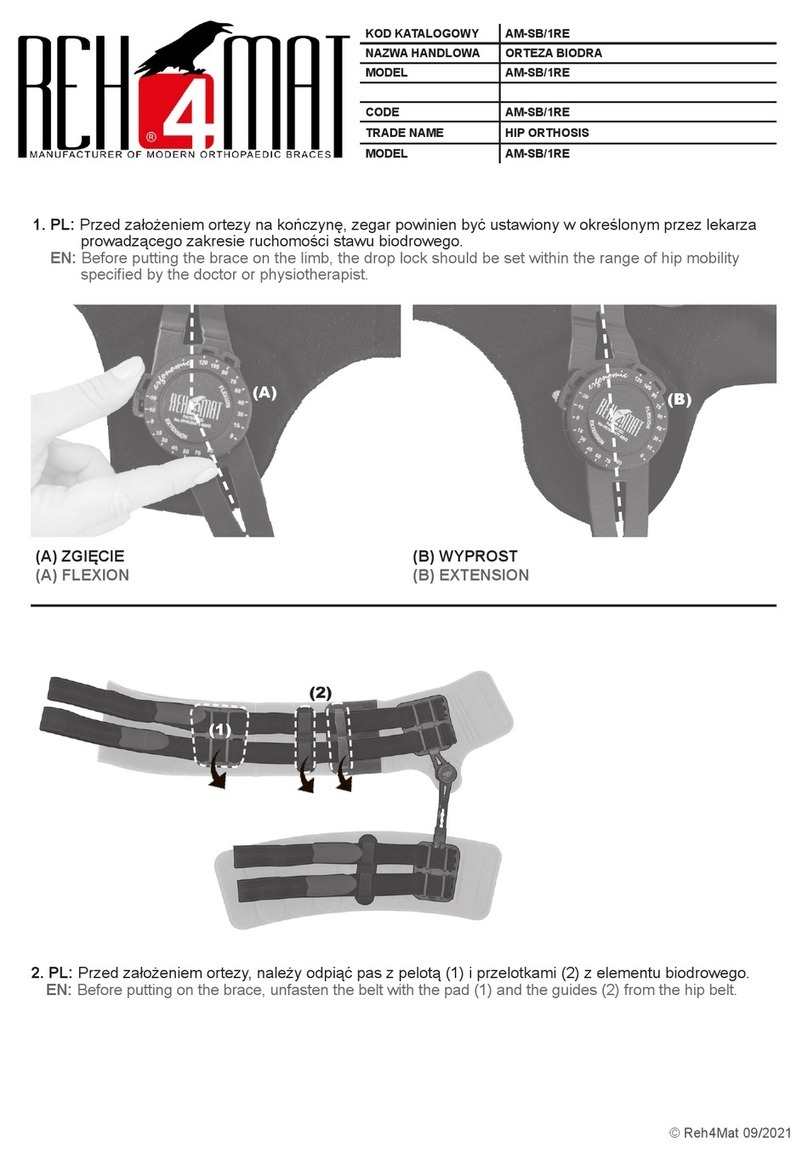
REH4MAT
REH4MAT AM-SB/1RE quick start guide
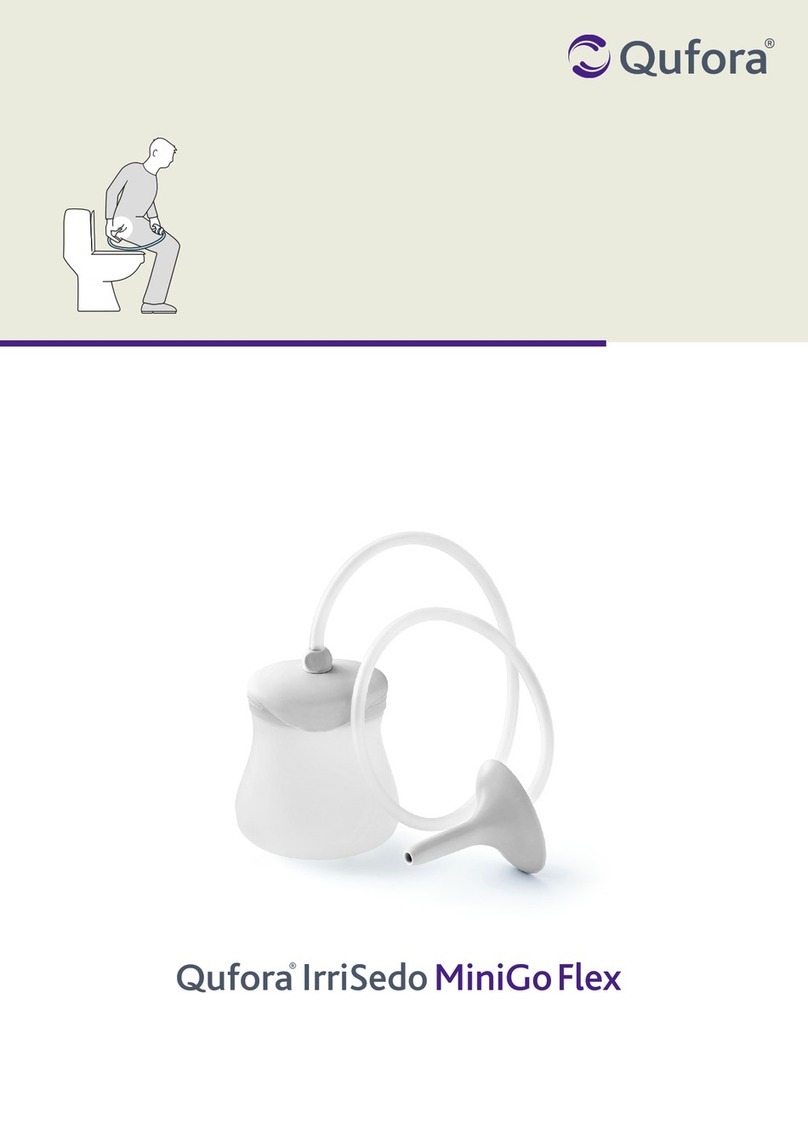
Qufora
Qufora IrriSedo MiniGo Flex Instructions for use
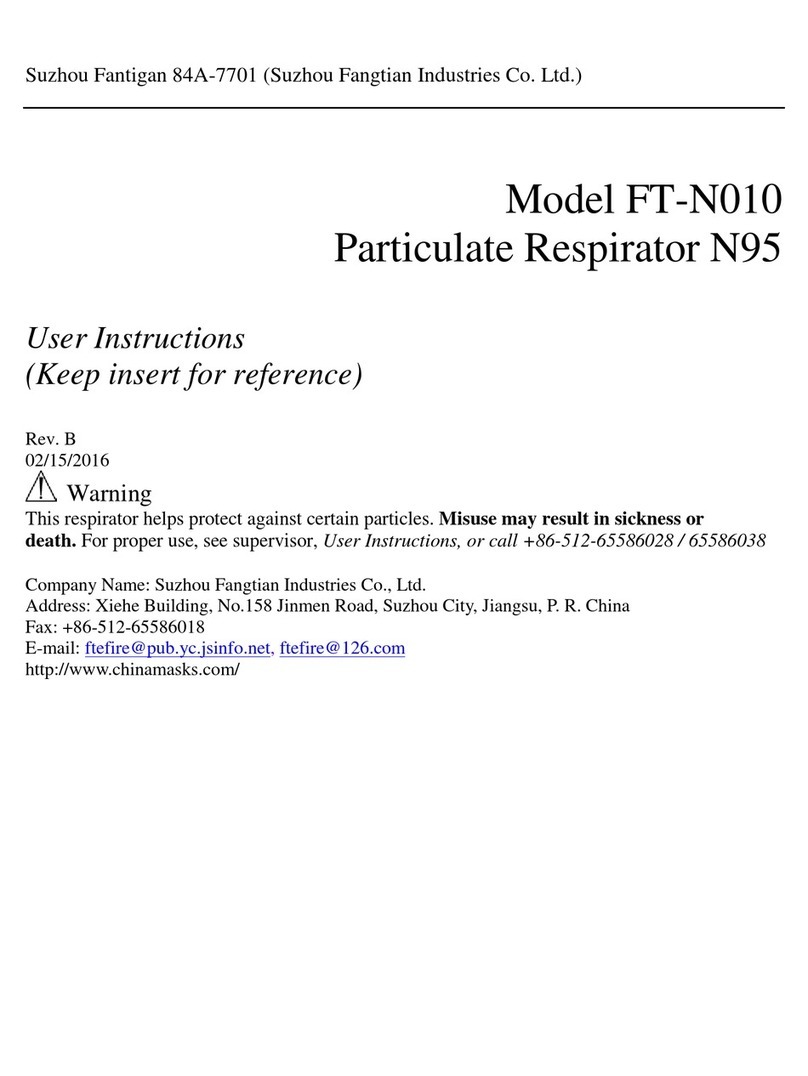
Suzhou Fangtian Industries
Suzhou Fangtian Industries FT-N010 User instructions

Kane
Kane PHMD48 instructions
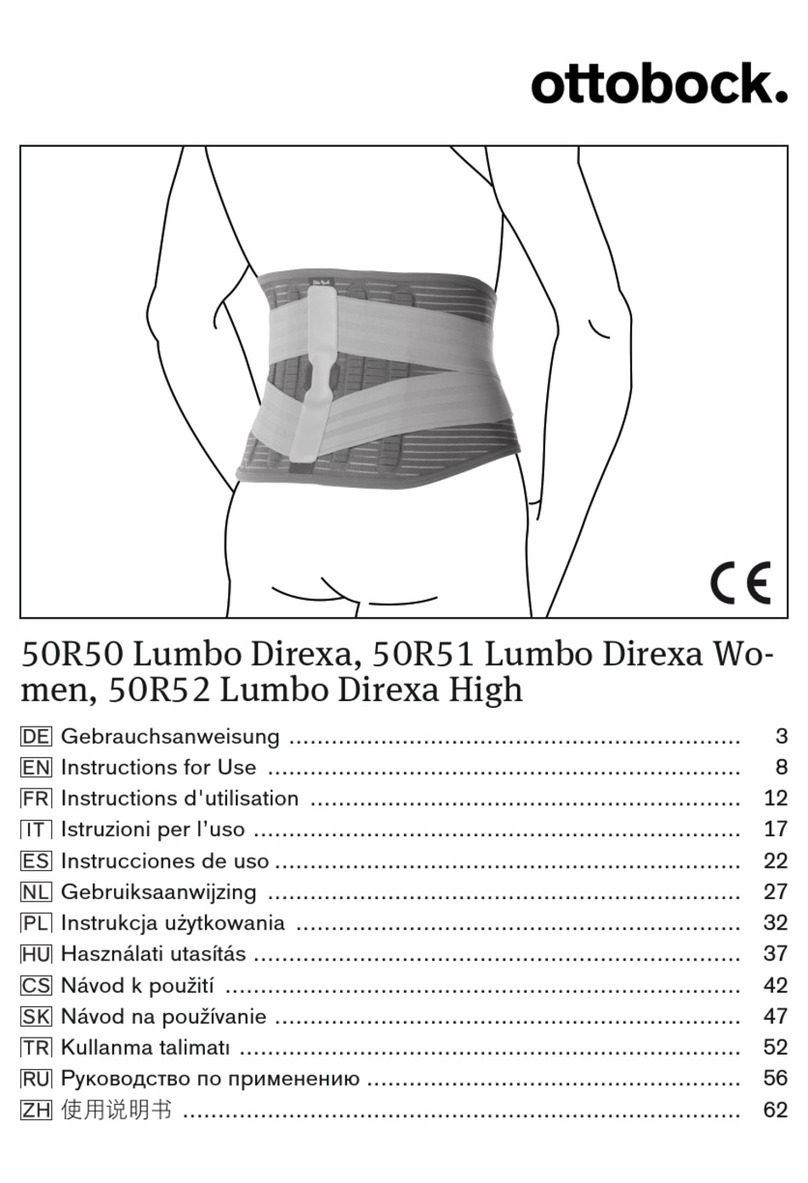
Otto Bock
Otto Bock 50R50 Lumbo Direxa Instructions for use
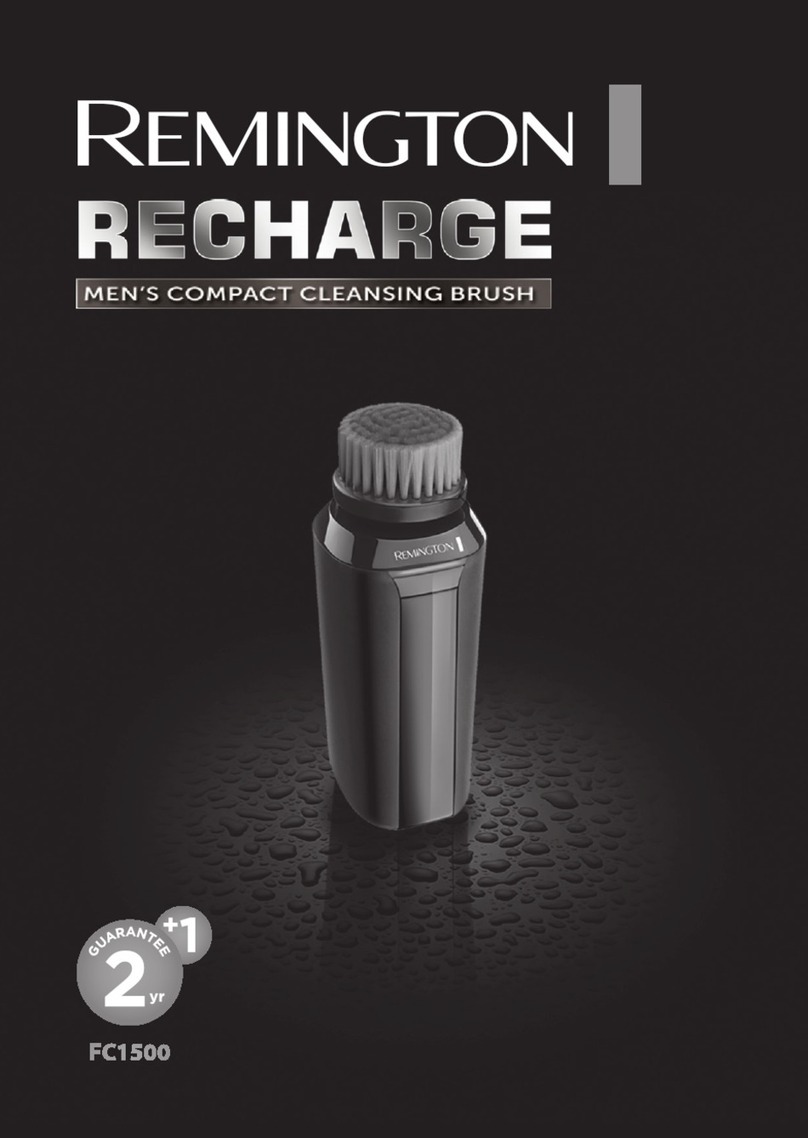
Remington
Remington RECHARGE FC1500 manual
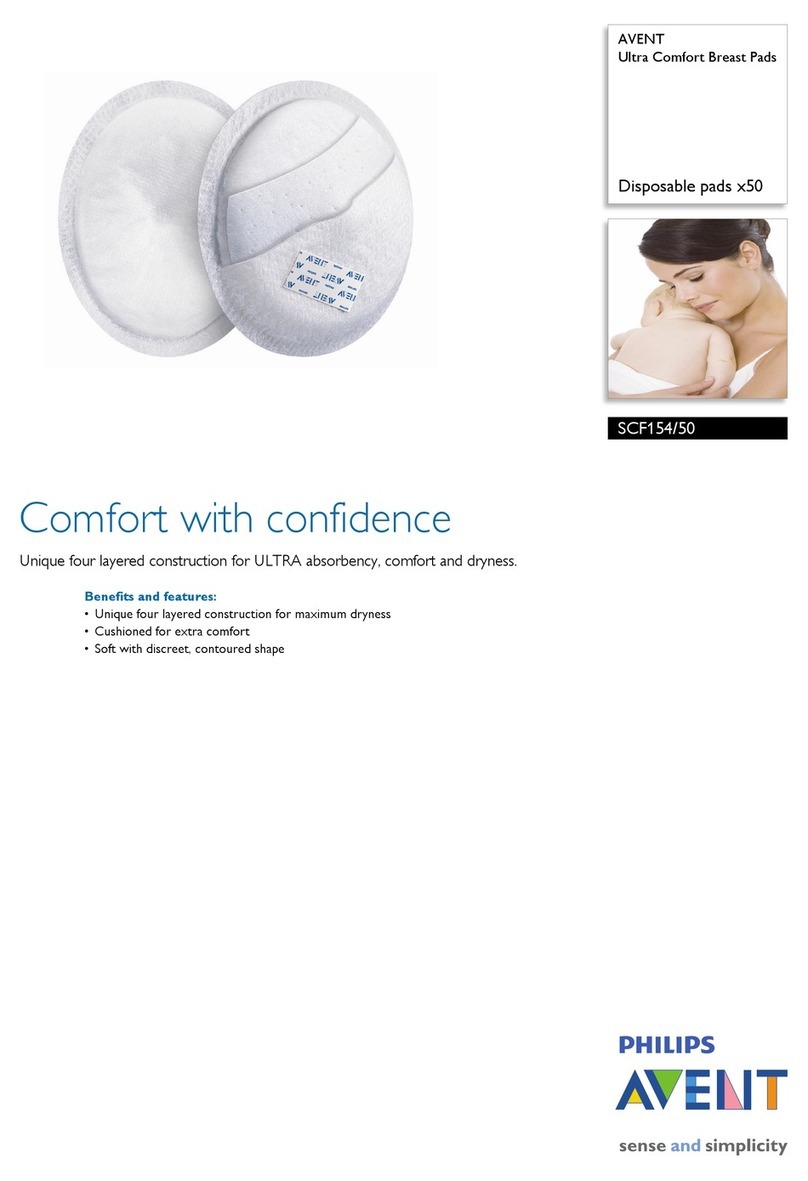
Philips
Philips AVENT SCF154/50 Specifications
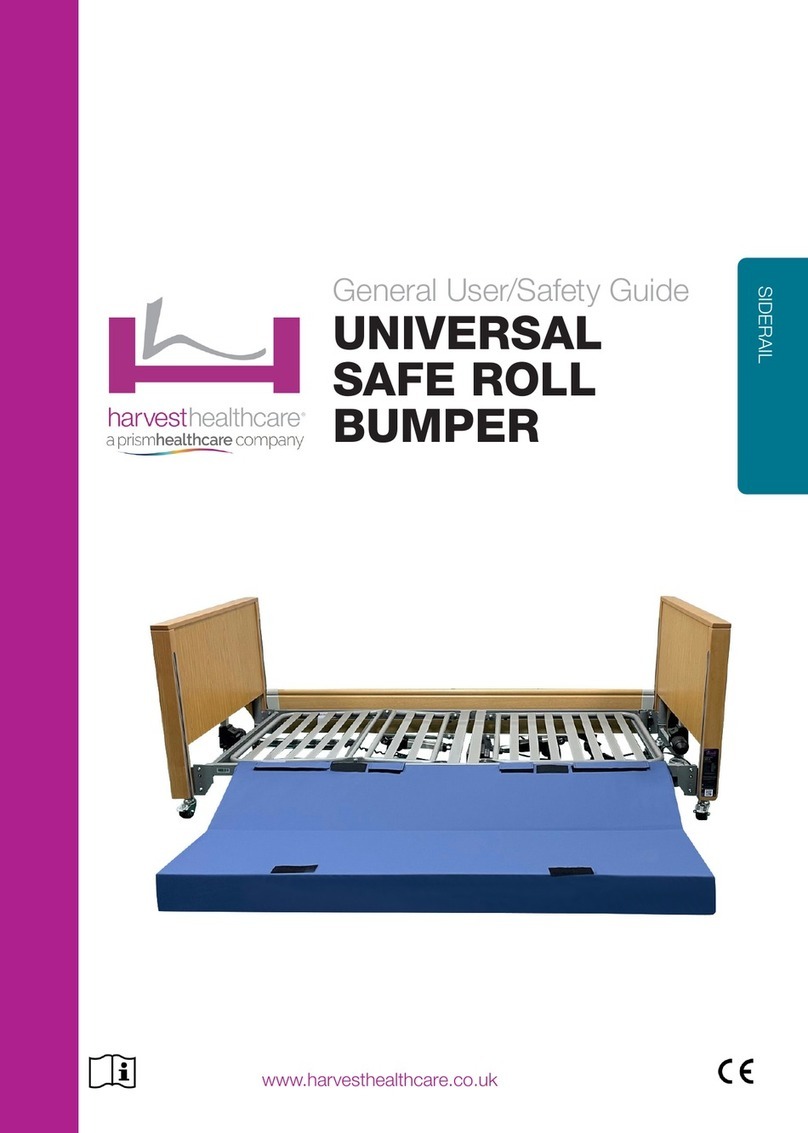
Harvest Healthcare
Harvest Healthcare ROLL BUMPER General User/ Safety Guide
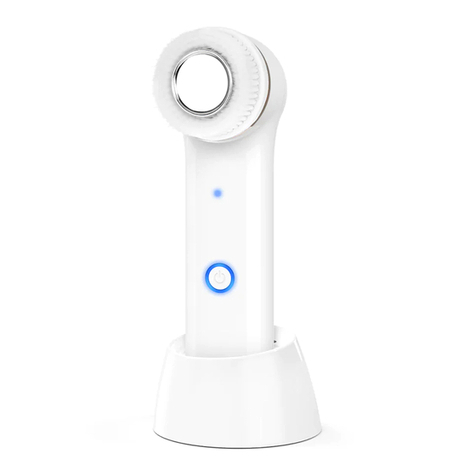
mychway
mychway NM-SN1S user manual

HOT TOOLS
HOT TOOLS PRO ARTIST HTBW44 Use and Care Instruction Manual
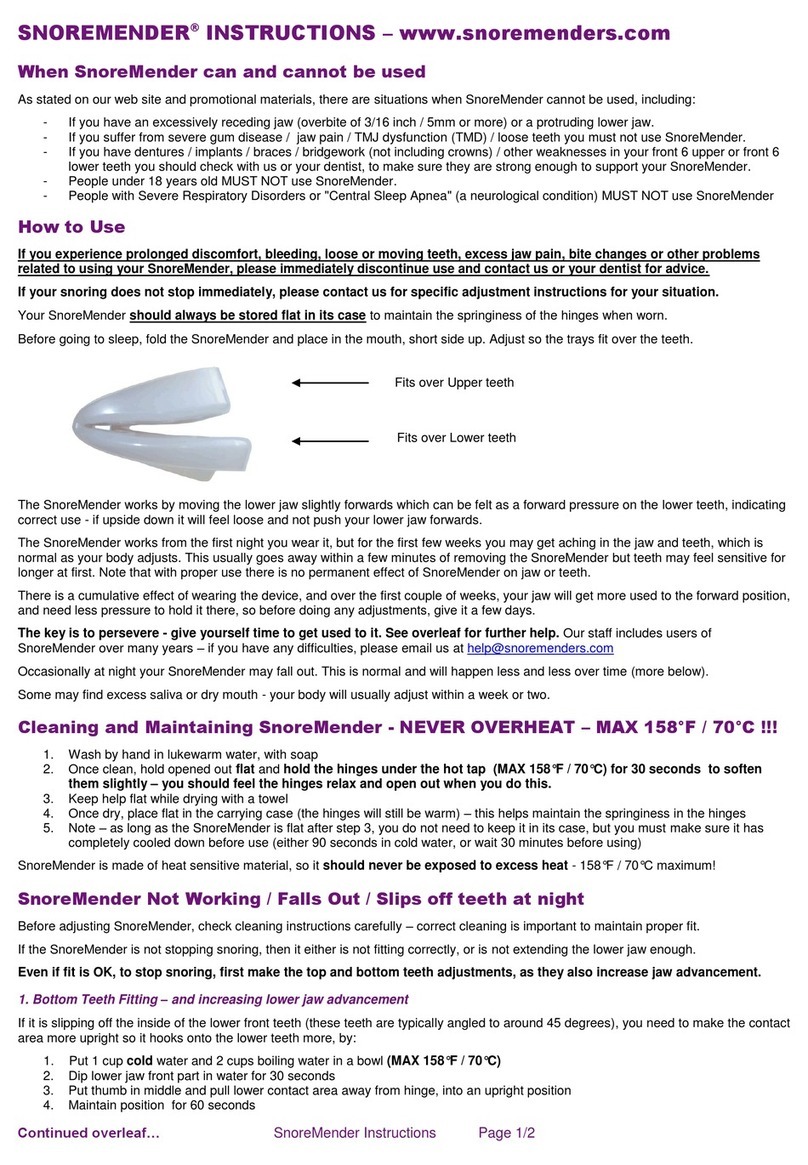
SnoreMender
SnoreMender SnoreMender instructions
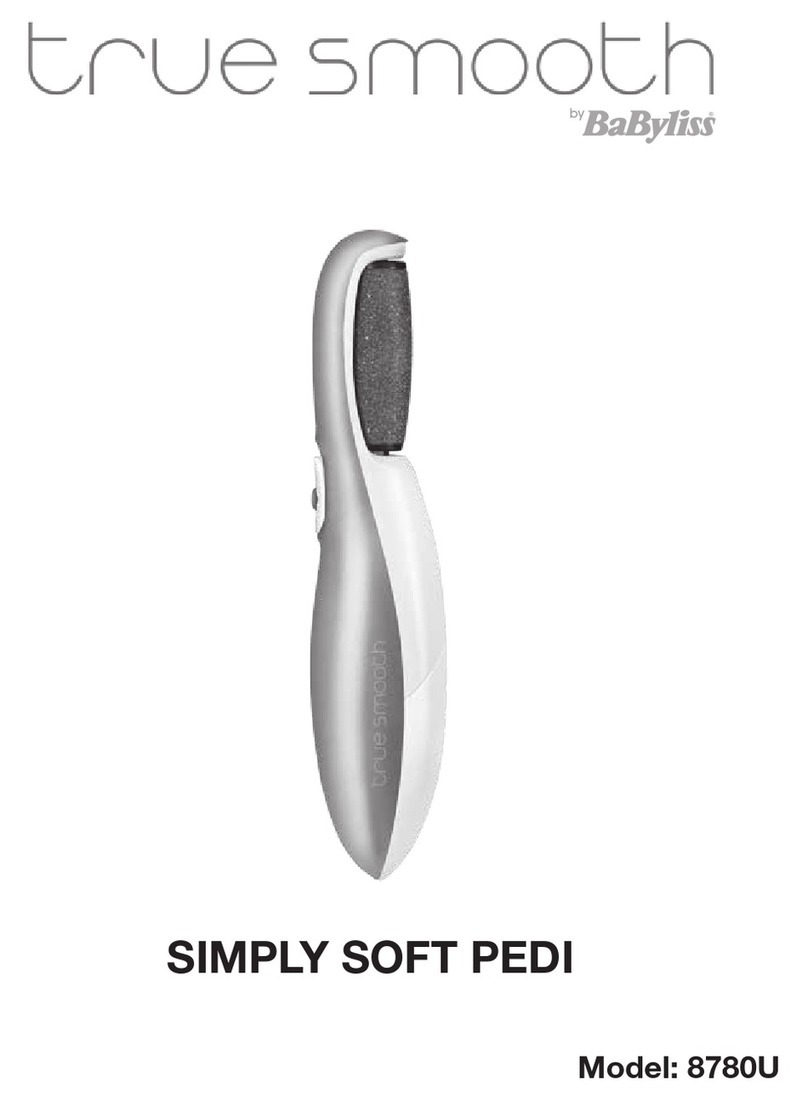
BaByliss
BaByliss True Smooth SIMPLY SOFT PEDI 8780U manual
